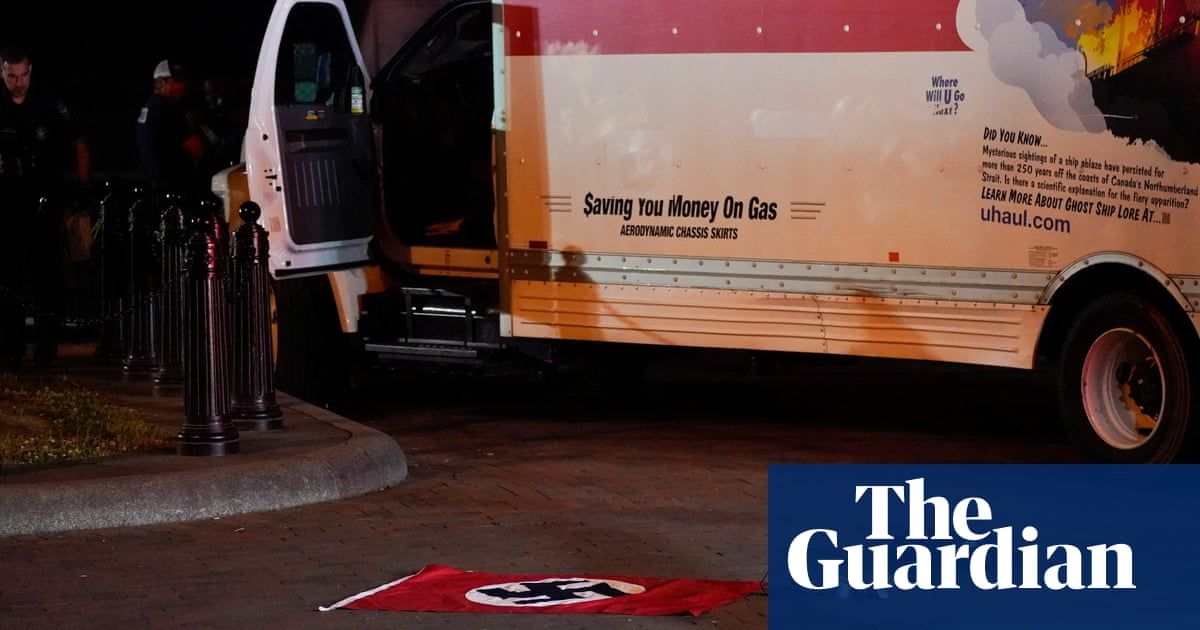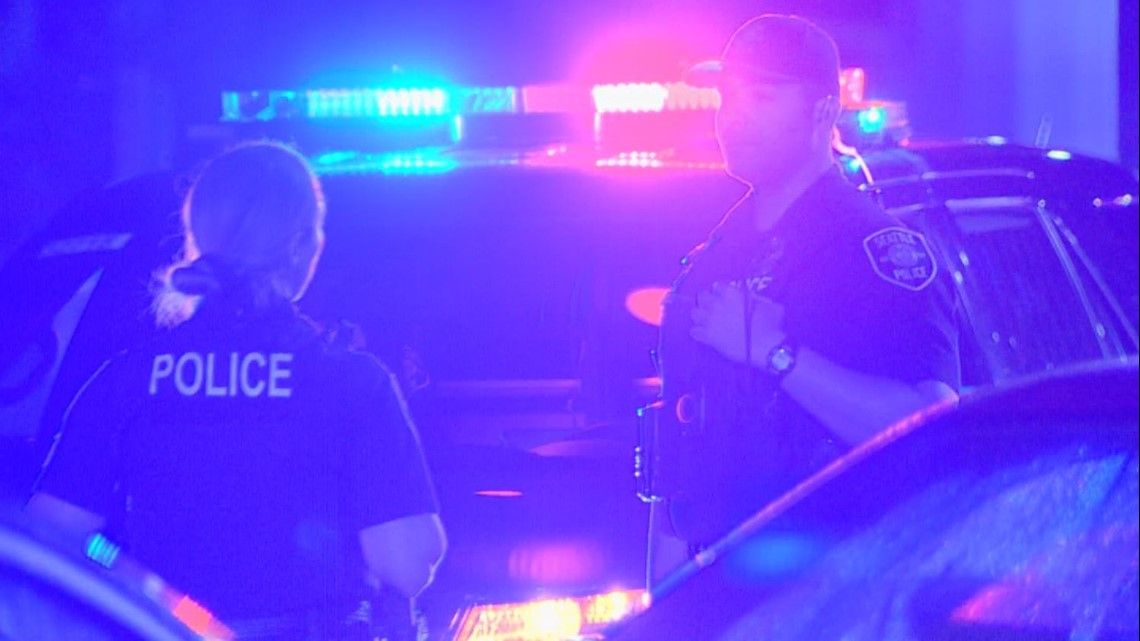Experts warn of increased risk of US terror attacks by rightwing ‘lone wolf’ actors
The US is at an increased risk of domestic terror attacks by rightwing “lone wolf” actors, experts have warned, as inflammatory Republican rhetoric around a variety of issues seems likely to continue ahead of the 2024 election.
The number of attacks by adherents to rightwing ideology has soared since 2016, as Republican lies about election interference, and escalating rhetoric from the right about minority groups, have served to “provide mechanisms” for individuals to become radicalized, an analyst said.
As the threat of domestic rightwing terrorism rises, researchers say individuals, rather than organized groups, are now far more likely to commit what analysts call “crimes inspired by extremist ideology”.
There have been a series of such attacks in recent years. In May 2022 a white supremacist killed 10 Black people at a Tops supermarket in Buffalo, New York. The attacker said he had chosen the location because it was in a predominantly Black neighborhood. He was sentenced to life in prison earlier this year.
A self-described white nationalist killed 23 people and injured 22 in a shooting in El Paso, on the border of Mexico and the US, in 2019, in an anti-immigration attack targeting Hispanic people.
In recent years a white supremacist killed nine people at a Black church in Charleston, while just this week a man was arrested after he crashed a rented truck into bollards near the White House. The man subsequently praised Adolf Hitler to investigators and said he intended to “kill the president”, according to charging documents.
Michael Jensen, senior researcher at the National Consortium for the Study of Terrorism and Responses to Terrorism (Start) at the University of Maryland, said 70% of individuals committing terrorist acts in the US are individuals, or part of “isolated cliques” – small groups of three to four people.
“That said, these individuals might be lone actors, but they’re not lonely actors,” Jensen said.
“They are embedded in these online ecosystems where they are exchanging ideas with each other all day every day.”
Jensen leads the Profiles of Individual Radicalization in the United States (Pirus) project, a database tracking how US extremists came to be radicalized.
According to the data, 90% of the cases of US terrorists are classed as domestic. Of the domestic extremists, 95% are far-right, Jensen said: white supremacists, Proud Boys, anti-immigrant groups and anti-government groups.
There has been a worrying increase in the number of attacks. Prior to 2016, Jensen and his team logged about 150 individuals a year who were “committing crimes inspired by extremist ideology”.
Since 2016, the number of people committing such crimes has jumped to about 300-350 cases a year, Jensen said – not including a huge spike in 2021 as a result of the January 6 insurrection.
As the number of incidents have risen, there have been changes in how people come to rightwing terrorism.
“Before the internet and before social media, how an individual was likely to radicalize is that it was going to be through a face-to-face relationship that they had in the physical world,” Jensen said.
“So they had a cousin that was involved in a skinhead gang and they recruited them, or there was a group active in their neighborhood and they saw a flyer and took an interest in it.
“It was a much more labor intensive process to get people involved.”
With the advent of social media, white supremacist ideas and groups are available “at the click of a button”, Jensen said. Individuals have a much easier path to becoming radicalized.
At the same time, the threat of rightwing terrorism has been exacerbated by the normalizing of political violence, or violent rhetoric, by elected officials and media personalities. Prominent figures can provide a gateway for people to commit violence when they demonize immigrants, the LGBTQ+ community, or indulge conspiracies like the great replacement theory, Jensen said.
“They get this disinformation and conspiracy theories that are a bit more watered down: does not make calls to violence, but they provide the mechanisms for people to follow that narrative to the places where they will encounter that rhetoric.”
Susan Corke, Intelligence Project Director at the Southern Poverty Law Center, said the far right has been “increasingly mobilized since the beginning of the Trump era”.
“Currently, the level of mobilization, coordination and sustained focus of the far right’s anti-LGBTQ+, particularly anti-trans, is much worse.
“The past year saw unprecedented violence against transgender and gender-nonconforming people, and the most frequent victims were women of color, especially black transgender women,” Corke said.
Corke said terror attacks by individuals should be seen within the wider context of hate-filled rhetoric and extremist platforms.
“While a shooter or someone who takes violent action may act on their own, I would say that they are not solo actors,” she said.
“People do not ‘self-radicalize’ – they exist within social and political structures that perpetuate these ideas, often through deliberate disinformation and active recruitment from groups espousing hateful ideologies.”
Corke said the way to combat and prevent rightwing terrorism is to educate young people and work towards early intervention.
“Communities and governments need to adopt a public health approach to preventing extremism by engaging communities, mental health experts, social workers and, especially, people involved in the day-to-day lives of young people,” she said.
In 2021 a report by the Office of the Director of National Intelligence – the head of the US Intelligence Community – warned that racially motivated extremists posed the most lethal domestic terrorism threat. It echoed post-January 6 warnings from Christopher Wray, the director of the FBI, that the threat from domestic violent extremism was “metastasizing” across the country.
But despite the FBI and US intelligence pronouncements, a major problem with combating rightwing terrorism is that law enforcement does not adequately track of instances of violence, said Michael German, a former FBI special agent infiltrated white supremacy groups in the 1990s who now works at the Brennan Center for Justice.
“The FBI doesn’t know how many people white supremacists killed last year in the United States. They don’t collect that information,” German said.
When attacks by white supremacists do happen, “they often get parsed in a way that minimizes them,” he said. White supremacist violence is frequently recorded under the category of gang violence, rather than domestic terrorism, while attacks conducted by individuals who have far-right beliefs are frequently classified as hate crimes – outside of the domestic terrorism umbrella.
“You would think that if the FBI and the justice department had a real interest in significantly suppressing this type of crime, they would at least count them,” German said.
German said a significant change from the time he spent undercover to investigating neo-Nazi organizations in the 1990s to the modern environment is the language elected officials use to talk about certain groups.
“Back in the 90s there were Republicans who used dog whistle politics, they used phrases and arguments that the far-right militant crowd understood as speaking to them about their issues,” German said.
“Now you see sitting politicians who exalt in violence, and call for more of it and call for exonerating the people who committed violence because they committed violence in furtherance of their political cause.”
That’s the kind of rhetoric that led to the January 6 insurrection, German said – and could continue to cause problems in the future.
“If the government is saying: ‘Do it, and do it for me, and I’ll pardon you, or I’ll pay your legal bills, which are things that are said today. Then it’s easier [for members of the far right] to say: ‘Okay, this is this is authorized.’
“That’s how you get 10,000 people attacking the US Capitol.”
Source: The Guardian


